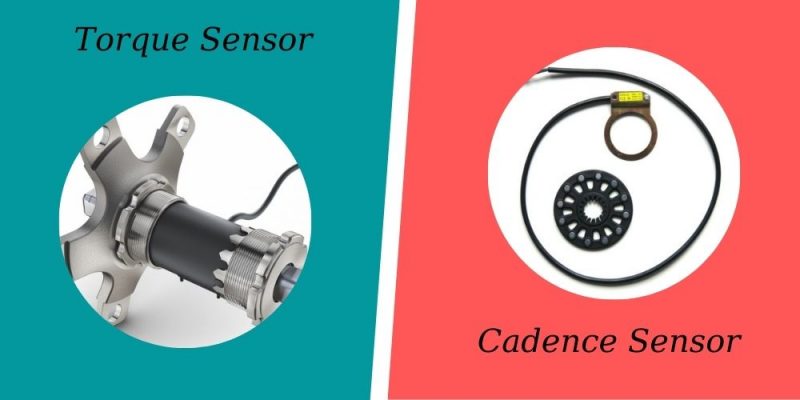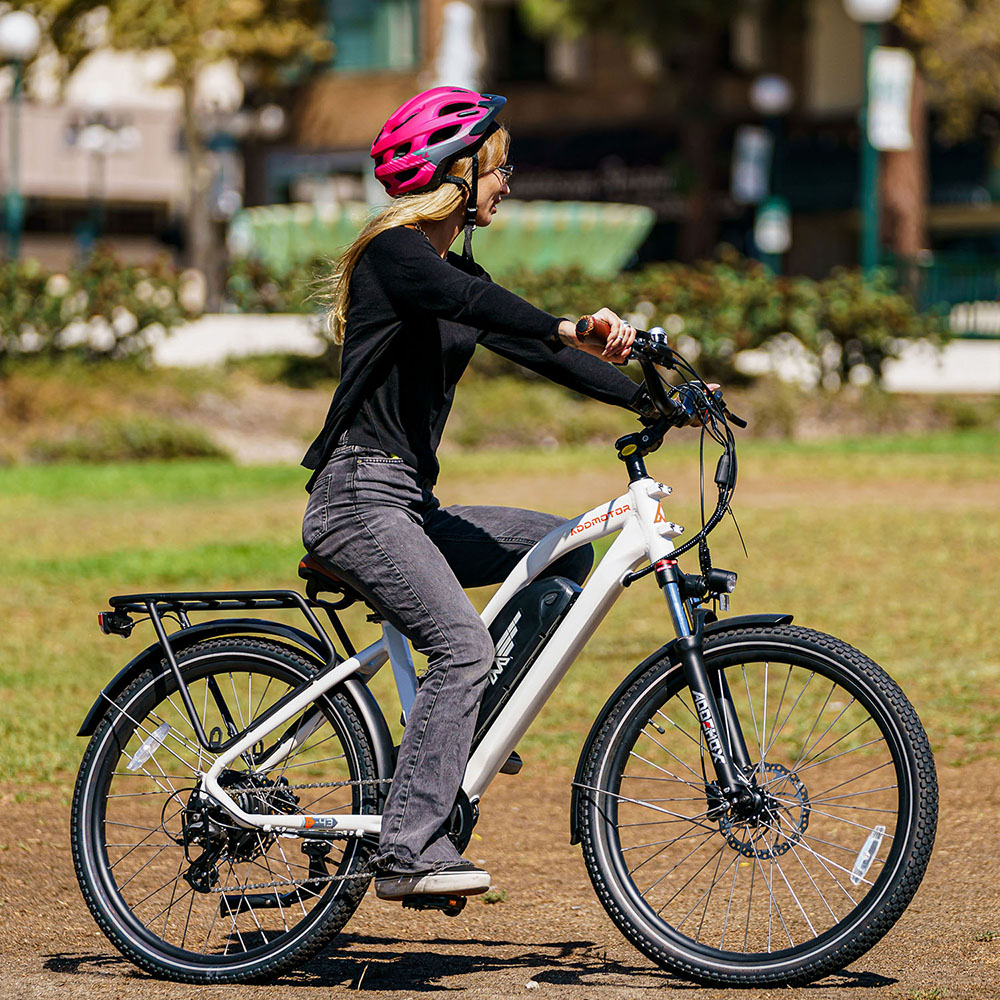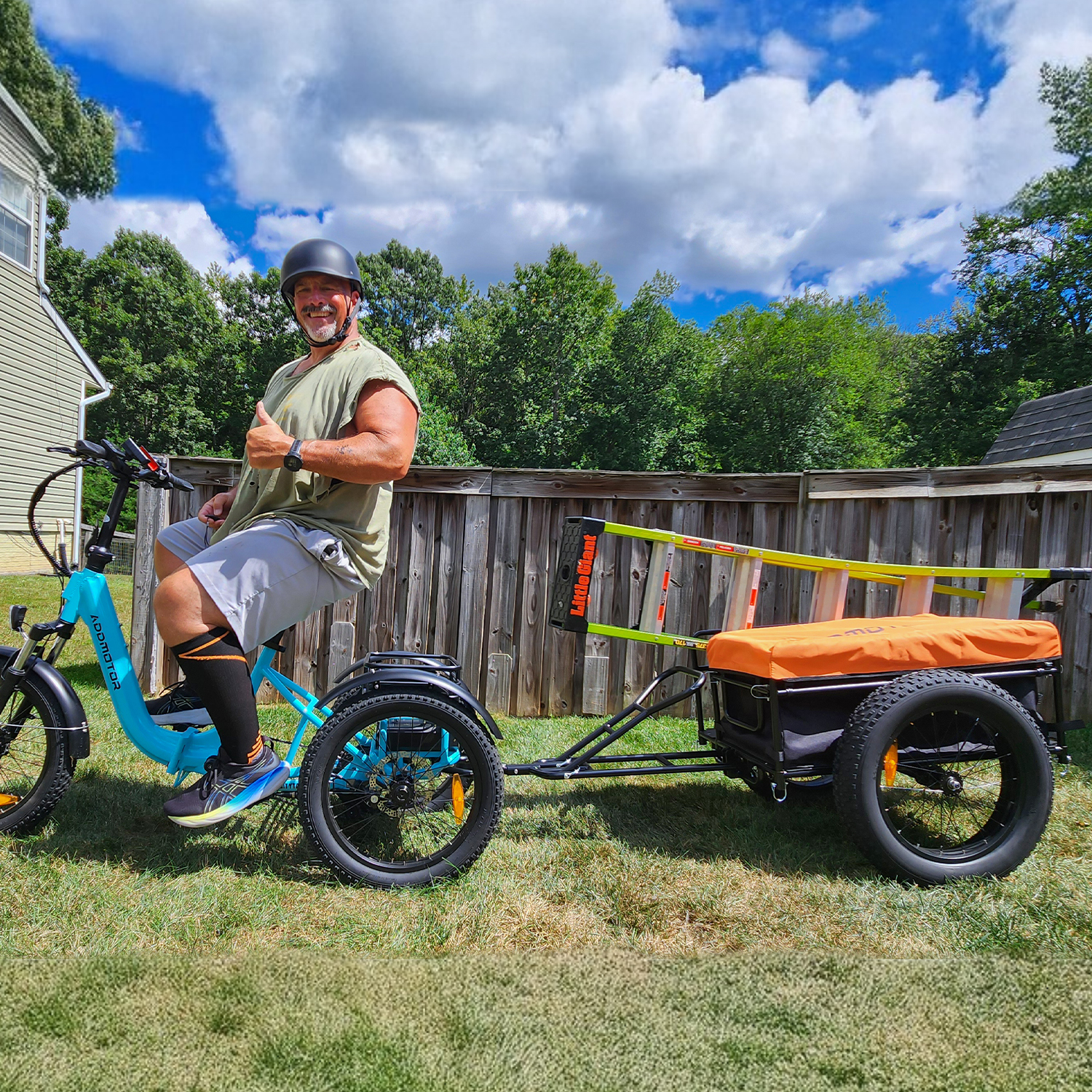Which is better: Torque Sensor vs. Cadence Sensor on Electric Bikes
Torque sensors and cadence sensors are the two primary categories of electric bike sensors. Despite having a similar overall function, they all function differently. Similar to how the sort of sensor fitted on the adult electric bike makes a significant difference in the riding experience.
In this article, we examine the distinctions between electric bike torque and cadence sensors from both a technical and rider's experience point of view. This will enable you to choose which type is more appropriate for the experience you seek.

Cadence Sensor
Many electric bikes with cadence pedal assist sensors activate the motor when you pedal. Thus, when the pedals move in any way(PAS is on), the sensor sends information to the bike's motor to start functioning. The motor then operates at a predetermined power level as you move forward.
The rider's pedaling effort and selected pedal assist level to determine the motor's power. The motor continues to run as your pedal cadence increases until it reaches that set threshold, maintaining it despite changes in terrain, gear ratios, and pedal speed.
Pros of Cadence Sensor
Ease of Use
The ease of use of an electric bike equipped with a cadence sensor is one of its key advantages. The motor may be started with minimal pedal effort on electric bicycles equipped with cadence sensors. Depending on how much or how little effort you put in, it will still function. Because of this, cadence-based e-bikes are a great option for speed-conscious casual riders or cyclists with physical limitations.
Consistent Power
Cadence-based systems are capable of acting as an "on'' and "off" switch. To put it another way, you get help while you pedal at set rates, and you stop getting help when you stop pedaling. Because of this, users of ebikes equipped with cadence sensors can typically rely on getting steady power and assistance whenever they need it. Therefore, to increase your ability, you will only need to put in more work.
Flexibility to ride and cruise
Cadence sensors make it easier for you to utilize your ebike's engine to its full potential. The sensor lets you select the typical charging and readiness times for the e-bikes. You can choose between cruising and taking it easy on the trip, or pedaling with lower assist settings for less assistance. The PAS volume can also be increased if you prefer to feel the breeze on your face.
Easily accessible
Given that several electric bikes contain a cadence sensor, getting an ebike with a cadence sensor is simple. Because manufacturing the cadence sensor bike would be less expensive, it could be produced in large quantities and subsequently sold for a low price.
Cons of Cadence Sensor
Less Range
The range is a vital factor to take into account when determining which electric bike is best for you. The expected vs. actual range of an ebike can ultimately be influenced by several factors. Cadence-based PAS commonly used, especially at higher settings for longer periods, consumes a lot of battery power to engage the motor.
Less Intuitive feeling
It may seem contradictory to use a pedal assist system while riding with a cadence sensor, especially if you want to feel more connected to your e-bikes. However, this does not negate the value of the cadence sensors in e-bikes for challenging workouts.
Demands little work
Although this is ultimately subjective, depending on the user's activity level, preferences, and riding needs, cadence-based electric bikes could feel like they need to work harder for them. Since the sensors communicate to engage the motor anytime movement at the pedals is detected, some riders frequently feel as though they are receiving too much pedal assistance for their efforts.
Harder To Control
The amount of time that passes between the motor's on and off phases may vary. The electric bike may require assistance to remain in control in this situation. The e-bike may also spike when it first starts up.
Torque Sensor
A torque-based PAS is more sophisticated than one that uses cadence sensing. Torque sensing is typically designed to follow the rider's motions. Torque sensors, also known as smart sensors, use precision strain to gauge the amount of pressure being applied to the pedal by the rider. This enables your bike to determine the ideal quantity of pedal assistance for the circumstances.
Torque sensors employ a precise strain gauge to measure how hard riders are pedaling, as opposed to cadence-based sensors, which detect whether or not a rider is pedaling. To calculate the power the motor should provide, a torque sensor analyzes how much force the rider exerts on the pedals. These modifications are made in real time by torque sensors, which change the motor's output in response to the rider's pedal pressure.
In other words, a torque sensor amplifies every input you make by taking them. Pedal assist bikes with torque-sensing can cost more, but they also offer a smoother ride overall and require less battery power. The impact of torque sensing on the battery will be covered in greater detail below.
Pros of Torque Sensor
More Natural and Intuitive Riding Style
Since a torque sensor can change the motor's level of assistance to match the rider's pedaling efforts, rides might feel more natural. The torque sensor detects when to deliver power and does it gradually and dynamically, so riders won't experience a sudden surge of power while changing PAS levels. Because riders might have a direct link to the engine, a torque-sensor PAS can frequently mimic the sensation of riding a conventional bicycle.
Pedal Assisting Higher Range
Given that torque sensors don't deliver a constant amount of output at any given PAS level, using them while riding allows you to conserve battery life and travel further. Ebikes that use torque won't waste energy. Depending on how much effort the riders put in, their motor only supports them. Instead of making the e-bike do all the work, they provide what is needed to make riders feel their exertion while propulsion an ebike. Providing them with increased control over their experience, e-bike, and ride.
Long Lasting Battery
The battery life of an electric bicycle with a torque sensor is longer. Regardless of how hard you press on the pedal, the battery is always charging while you ride. Furthermore, the battery could recharge even while you brake, allowing you to travel farther.
Cons of Torque Sensor
Difficult To Attain Top Speed
You get out of a torque sensor what you put into it. As a result, pedaling a torque-based system demands more effort than pedaling a cadence-based system, which allows riders to reach faster speeds. An ebike with a torque sensor will also need more constant pedal power to maintain the top speed after reaching it.
More Effort To Ride
For torque-based PAS systems to operate and perform to their maximum potential, more effort is required from their riders. The demands, preferences, and level of activity of the user for these types of electric bikes all affect this variable.
More Expensive
A torque sensor costs about $150, and an ebike with one costs about $2,000 on average. These expenses are high for a sensor.
Final Words
The next most prevalent sensor type, cadence, activates the motor when you pedal to provide a boost when required, like when climbing a hill. The most typical, torque sensors, employ a motor to continuously alter the power based on how arduously you're pedaling.
It is challenging to choose between a torque sensor and a cadence sensor. However, one is neither better nor worse than the other at the end of the day. What kind of riding experience you want truly depends on that. Choose torque if you want a more responsive and effective ride. Cadence is your best option if you want something more reasonably priced yet allows you to reach high speeds with little effort.




